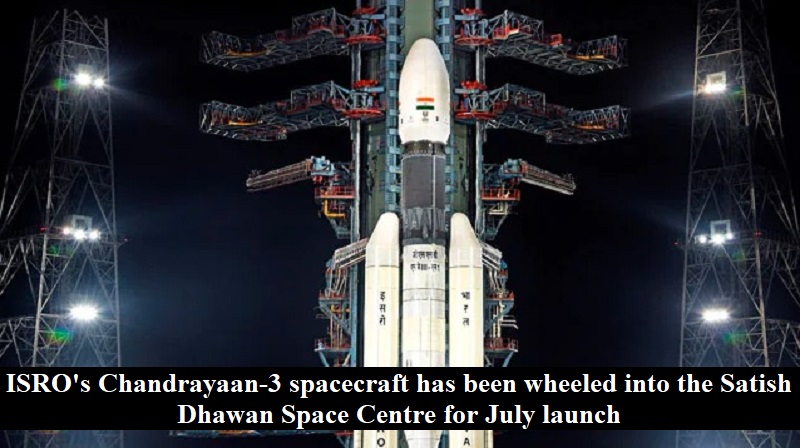
According to reports, the spacecraft intended for India’s third lunar mission, named Chandrayaan-3, has been transported to the country’s spaceport, Satish Dhawan Space Centre. This mission aims to achieve a controlled soft landing on the moon’s surface and conduct in-situ analysis using a rover.
On Friday, a specialized truck slowly transported the spacecraft from the UR Rao Satellite Centre in Bengaluru to the spaceport under tight security. The UR Rao Satellite Centre is responsible for the design, development, and testing of India’s satellites and interplanetary probes.
Due to the sensitive electronic components onboard, the spacecraft is always kept in a clean room during transportation. Clean rooms are specialized facilities where pressure, temperature, and humidity are carefully controlled to maintain cleanliness and prevent the entry of dust particles.
Meanwhile, preparations are underway at the Satish Dhawan Space Centre to assemble and prepare India’s heaviest rocket, LVM3, which will launch the Chandrayaan-3 spacecraft into an orbit around the Earth before its journey to the moon.
Chandrayaan-3 will mark the sixth orbital flight of the LVM3 rocket, which has achieved success in all previous missions. Earlier this year, ISRO conducted tests to ensure that the spacecraft can withstand the noise and vibrations generated during the rocket’s launch and flight.
The tests were challenging as the spacecraft consists of three modules: the propulsion module, lander module, and rover module. However, the vibration and acoustic tests provided sufficient confidence in the spacecraft’s structural integrity and its ability to survive the launch environment.
Chandrayaan-3 shares the same mission goals as its predecessor, Chandrayaan-2, which was launched in 2019. The primary objective is to achieve a safe lunar landing and enable the rover to traverse the lunar surface.
After the unsuccessful landing of Chandrayaan-2, ISRO implemented various measures to ensure the success of the third lunar mission. These measures include software changes, improvements in the propulsion system, new sensors, and ruggedization to handle unexpected situations and failures.
It’s important to note that Chandrayaan-3 will only carry a lunar lander, rover, and propulsion module, unlike Chandrayaan-2, which included an orbiter. The Chandrayaan-2 orbiter remains functional, performing imaging and remote sensing operations from an altitude of 100 kilometers above the lunar surface.

Post Your Comments